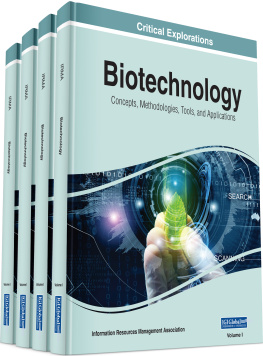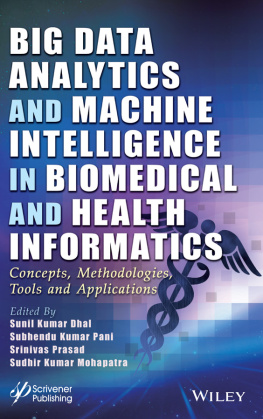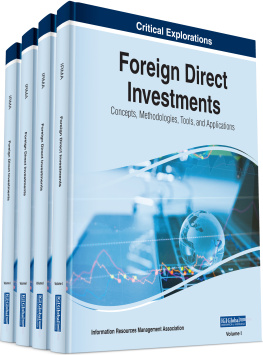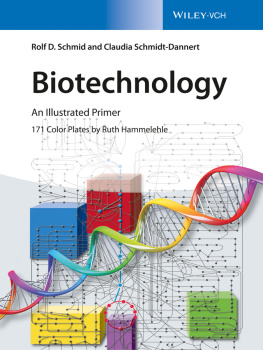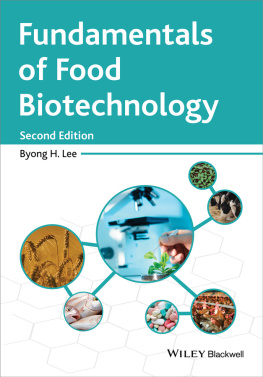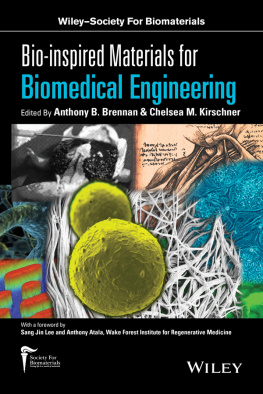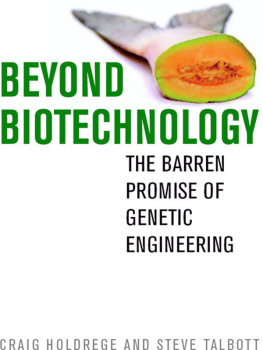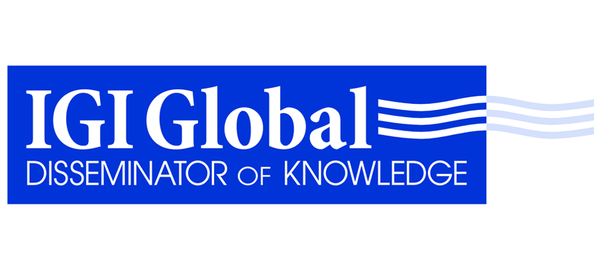Biotechnology:
Concepts, Methodologies, Tools, and Applications
- Information Resources Management Association
USA
Published in the United States of America by IGI Global (an imprint of IGI Global) 701 E. Chocolate Avenue Hershey PA 17033 Tel: 717-533-8845 Fax: 717-533-8661 E-mail: cust@igi-global.com Web site: http://www.igi-global.com/reference
Copyright 2019 by IGI Global. All rights reserved. No part of this publication may be reproduced, stored or distributed in any form or by any means, electronic or mechanical, including photocopying, without written permission from the publisher.
Product or company names used in this set are for identification purposes only. Inclusion of the names of the products or companies does not indicate a claim of ownership by IGI Global of the trademark or registered trademark.
Library of Congress Cataloging-in-Publication Data
Names: Information Resources Management Association, issuing body.
Title: Biotechnology : concepts, methodologies, tools, and applications /
Information Resources Management Association, editor.
Other titles: Biotechnology (Information Resources Management Association)
Description: Hershey PA : Medical Information Science Reference, [2019] |
Includes bibliographical references.
Identifiers: LCCN 2018057821| ISBN 9781522589037 (hardcover) | ISBN
9781522589044 (ebook)
Subjects: | MESH: Biotechnology
Classification: LCC R858 | NLM TP 248.2 | DDC 610.285--dc23 LC record available at https://lccn.loc.gov/2018057821
British Cataloguing in Publication Data
A Cataloguing in Publication record for this book is available from the British Library.
All work contributed to this book is new, previously-unpublished material. The views expressed in this book are those of the authors, but not necessarily of the publisher.
Editor-in-Chief
Mehdi Khosrow-Pour, DBA
Information Resources Management Association, USA
Associate Editors
Steve Clarke, University of Hull, UK
Murray E. Jennex, San Diego State University, USA
Annie Becker, Florida Institute of Technology, USA
Ari-Veikko Anttiroiko, University of Tampere, Finland
Editorial Advisory Board
Sherif Kamel, American University in Cairo, Egypt
In Lee, Western Illinois University, USA
Jerzy Kisielnicki, Warsaw University, Poland
Amar Gupta, Arizona University, USA
Craig van Slyke, University of Central Florida, USA
John Wang, Montclair State University, USA
Vishanth Weerakkody, Brunel University, UK
Preface
The constantly changing landscape of Biotechnology makes it challenging for experts and practitioners to stay informed of the fields most up-to-date research. That is why Medical Information Science Reference is pleased to offer this four-volume reference collection that will empower students, researchers, and academicians with a strong understanding of critical issues within Biotechnology by providing both broad and detailed perspectives on cutting-edge theories and developments. This reference is designed to act as a single reference source on conceptual, methodological, technical, and managerial issues, as well as to provide insight into emerging trends and future opportunities within the discipline.
Biotechnology: Concepts, Methodologies, Tools, and Applications is organized into seven distinct sections that provide comprehensive coverage of important topics. The sections are:
- 1. Fundamental Concepts and Theories;
- 2. Development and Design Methodologies;
- 3. Tools and Technologies;
- 4. Utilization and Applications;
- 5. Organizational and Social Implications;
- 6. Critical Issues and Challenges; and
- 7. Emerging Trends.
The following paragraphs provide a summary of what to expect from this invaluable reference tool.
Section 1, Fundamental Concepts and Theories, serves as a foundation for this extensive reference tool by addressing crucial theories essential to the understanding of Biotechnology. Introducing the book is Role of Biotechnology in Bioremediation by Tapan Kumar Mohanta, Yugal Kishore Mohanta, and Nibedita Mohanta: a great foundation laying the groundwork for the basic concepts and theories that will be discussed throughout the rest of the book. Section 1 concludes and leads into the following portion of the book with a nice segue chapter, An Overview of Biological Data Mining by Seetharaman Balaji.
Section 2, Development and Design Methodologies, presents in-depth coverage of the conceptual design and architecture of Biotechnology. Opening the section is Application of Uncertainty Models in Bioinformatics by B. K. Tripathy, R. K. Mohanty, and Sooraj T. R. Through case studies, this section lays excellent groundwork for later sections that will get into present and future applications for Biotechnology. The section concludes with an excellent work by Anouar Boucheham and Mohamed Batouche, Hybrid Wrapper/Filter Gene Selection Using an Ensemble of Classifiers and PSO Algorithm.
Section 3, Tools and Technologies, presents extensive coverage of the various tools and technologies used in the implementation of Biotechnology. The first chapter, Internet of Things and Nature-Inspired Intelligent Techniques for the Future of Biomedical Engineering by Gur Emre Guraksin, lays a framework for the types of works that can be found in this section. The section concludes with Genome Sequence Analysis in Distributed Computing Using Spark by Sagar Ap, Pooja Mehta, Anuradha J., and B. K. Tripathy. Where Section 3 described specific tools and technologies at the disposal of practitioners, Section 4 describes the use and applications of the tools and frameworks discussed in previous sections.
Section 4, Utilization and Applications, describes how the broad range of Biotechnology efforts has been utilized and offers insight on and important lessons for their applications and impact. The first chapter in the section is A Romance of the Three Kingdoms: Biotechnology Clusters in Beijing, Shanghai, and Guangdong Province, China written by Lusa Ca Petr Hanel, Jie He, Jingyan Fu, Susan Reid, and Jorge E. Niosi. This section includes the widest range of topics because it describes case studies, research, methodologies, frameworks, architectures, theory, analysis, and guides for implementation. The breadth of topics covered in the section is also reflected in the diversity of its authors, from countries all over the globe. The section concludes with Knowledge Management in Biotechnology Drugs in Brazil as a Case Study of the National Pharmaceuticals Laboratories by Jorge Lima de Magalhes, Marcus Vinicius Santos do Carmo, and Zulmira Hartz, a great transition chapter into the next section.
Section 5, Organizational and Social Implications, includes chapters discussing the organizational and social impact of Biotechnology. The section opens with Collaboration, Innovation, and Funding as Survival Factors for Canadian Biotechnology SMEs by Catherine Beaudry and Jol Levasseur. This section focuses exclusively on how these technologies affect human lives, either through the way they interact with each other or through how they affect behavioral/workplace situations. The section concludes with Artificial Intelligence Ethics in Biomedical-Engineering-Oriented Problems by Alice Pavaloiu.
Section 6, Critical Issues and Challenges, presents coverage of academic and research perspectives on Biotechnology tools and applications. The section begins with Is China Catching Up? Health-Related Applications of Biotechnology by Petr Hanel. Chapters in this section will look into theoretical approaches and offer alternatives to crucial questions on the subject of Biotechnology. The section concludes with Innovation and Intellectual Property Rights: The Case of Soybean Seeds in Argentina and the United States by Mercedes Campi.

